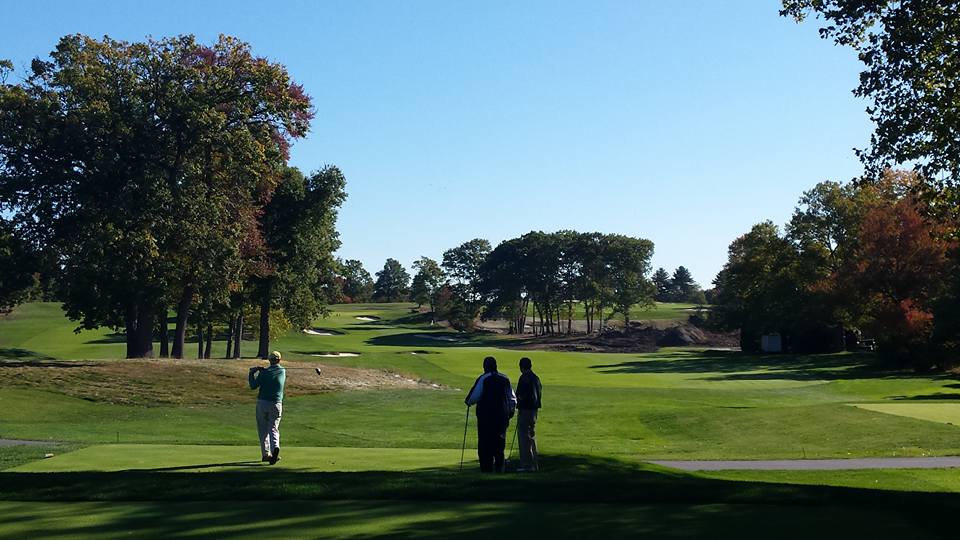SCARSDALE, N.Y. - Ardent golfers on both sides of the pond have heard of Sunningdale Golf Club in Merry Old England, a heathland masterpiece by Harry Colt, and one of the world’s great courses, so rightly famous that author Ian Fleming made his quintessential super-spy James Bond a member of the august club. But here in America another Sunningdale is making waves among the golf cognoscenti. It’s Sunningdale Country Club in Scarsdale, currently in the midst of the multi-million dollar redesign by Mike DeVries, the man who gave us Greywalls, Kingsley Club and Cape Wickham. With just three holes left to complete, the club anticipates and joyous grand reopening next spring as the club turns 104 years young. I caught up with DeVries for a few minutes as he jumped off his dozer.
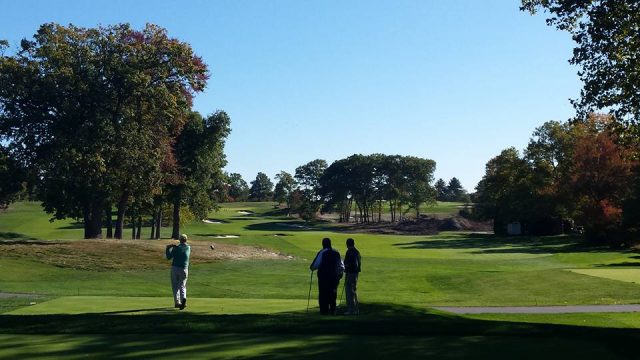
JF: How did you first start playing golf?
MD: My grandfather taught me the game when I was about 8, and I fell in love with it from day one. I’d play at a small little local nine-hole public golf course in Frankfort, Mich., called Frankfort G.C. I’d hook up with whoever was going out – old folks, young kids, a family, it didn’t matter - I just wanted to play.
My grandparents were also members at Crystal Downs, so I’d follow them around when they’d play, and they’d let me chip and putt or watch their lessons. Once when Gramma was having a lesson, the old pro, Johnny Vaughn, saw me watching and said, “Why don’t we have Mike hit a couple?” I did and then he said, “OPPPPHHHHHH He hits it just like Arnold Palmer.” All my Gramma’s heard was Arnold Palmer’s name and her heart started fluttering...Classic.
JF: Who are your favorite golf architects and why?
MD: Alister Mackenzie – I grew up on Crystal Downs, so that’s pretty obvious. His green complexes are phenomenal: such a wide variety of contour on the greens. His bunkering is not only terrific visually, but the naturalness blends in well with the landscape as well as being tough. It’s a fair penalty once you get in them. He’s also the best router of golf courses, from the rhythm and flow of the holes to the transitions from hole to hole.
JF: Who else besides Mackenzie?
MD: Macdonald, Raynor and Banks. Also Ross, Tillinghast and Colt. The older didn’t move a lot of earth, yet they had terrific strategies. They all looked at the land, and they used what that land offered them.
JF: What ideas do you try to take from those designers, and how do you implement them on the ground?
MD: I try not to copy holes, but I do take strategies the classic designers might have used. Right now at Sunningdale, my newest project, we had three great designers – Raynor, Tillinghast and Travis - but post-WWII not much of their work was left. Between the Great Depression and changes made by intervening members and superintendents, there was just not much of their work left to restore. We also didn’t have any accurate drawings, aerials or examples of what was here. So what we’re doing here with our redesign is trying to recall and reclaim the traditional golf features of the property that they would have implemented and use. The playing corridors are almost all the same – a few changes here or there – but we redesigned the golf holes to use the strategies the natural landforms dictate.
JF: How did you begin working towards becoming an architect?
MD: I started working in the pro shop and grounds crew at Crystal Downs. But when I went to college at Lake Forest, I majored in business, because they had no golf team. When I finished college and got married, I returned to Michigan, and that’s where I met Tom Doak. He was building High Pointe then. [Author’s Note: the course has since become NLE.] Tom also had a project going in Myrtle Beach, the Heathland Course. So for two or three years I worked with Tom at High Pointe and Heathlands.
JF: How did you make the jump into running your own design firm?
MD: I went back to U. Michigan and got my Masters in landscape architecture. Once I finished, I went to work with Tom Fazio at Hudson National and at Cordillera in Colorado. After that was when I started my own firm.
JF: Run through your own career arc for those readers unfamiliar with your work.
MD: I did Pilgrims Run, which is a public facility in Michigan. Then I did Kinglsey Club, Diamond Springs, Greywalls, and then the Mines, a public course in Grand Rapids. Then I did Cape Wickham in Tazmania.
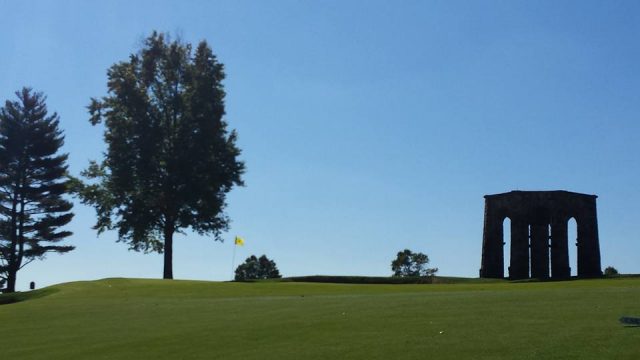
JF: You’re now working on a full redesign of Sunningdale Country Club, which started as a Seth Raynor course, but over several intervening decades saw as many as a dozen or more hands make major revisions. What was it that attracted you to tackle the Sunningdale redesign job?
MD: It has great land that leads to wonderful golfing opportunities. There are two big ridges that run across the property, and the golf holes twist and turn, rise and fall, and play along those land forms in many different ways: not just straight up and down or across, but at a diagonal. That creates considerably more interesting strategy. It makes you think about how to attack the golf hole.
JF: What are some specific examples from around the golf course?
MD: The sixth hole here was originally an Alps hole. The green got moved up at some point, so we restored the green, built it on a big, long rock ledge. We also brought back the blind second shot aspect. There’s no big hazard in front, but there is a swale. We restored that too.
On 10 and 13, the tremendously bold ledge rock formations that the fairways roll over create a great obstacle to overcome on your drive or divert your ball into a less desirable position for the approach, depending on how well you execute your drive. And on eight, the par 3, the hole plays from one ridge to another, a really exciting shot.
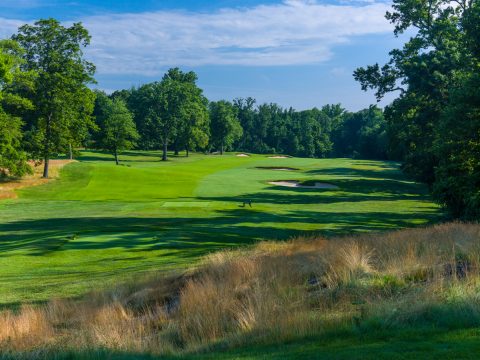
JF: It looks natural, especially the tie-ins between the holes and the surrounds, and it plays wonderfully, with a great emphasis on the ground game. What’s the secret to making it look eminently natural even though it’s designed by man?
MD: We just try to re-incorporate the natural features we find on the property into the hole. We also tried to keep the greens close to the tees: Faster golf, easier walk, and it provides a smooth blend from one feature to the next feature and from hole to hole, so they are not disjointed but, instead, are one consistent and contiguous landform.
Take, for example, the intermediate bunkers between the fairway and the green. The old bunkers were on top of the features instead of integrated into them. So we reestablished them; it took a lot of earth moving to do that. But then in other places, we had to build something new altogether.
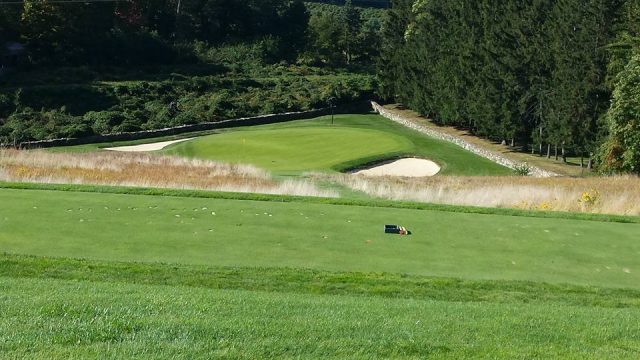
JF: How do you make those look like a natural fit?
MD: You have to build a landform, and then integrate the feature into that landform. You don’t build a feature first, you build the landform; then you integrate the feature into the land form. You also have to spend time on the site, walk the property, because you always run into problems you don’t anticipate. As good as technology or GPS or topo maps are, there’s always stuff in the soil you don’t know. So you really need to be out there.
JF: What would you say to people who might criticize you for not restoring Raynor? Or for putting your own design in place of any of the other great architects, like A.W. Tillinghast and Walter Travis, who also worked on the design of the golf course?
MD: Well Raynor’s work began to be erased as early as four years after he finished the golf course. There was almost nothing left of Raynor’s work. And yes, Tillinghast and Travis made contributions to the design as well, but intervening hands kept making changes to everything - greens, bunkers, tees - only the playing corridors remained intact. As the years went on, the work of the Golden Age designers vanished. There was almost nothing to restore. The flavor of the Alps hole on six was an example of where we could bring something back, but that was also because that’s what fit the land so perfectly. But overall, it was thought that a clean slate that recalled the Golden Age strategies, mixed with a natural approach using the features of the land, would create a course true to the terrain and landscape and its heritage at the same time.

